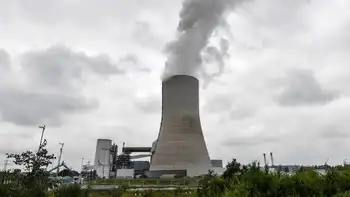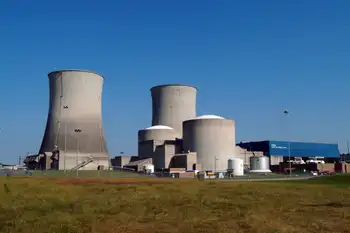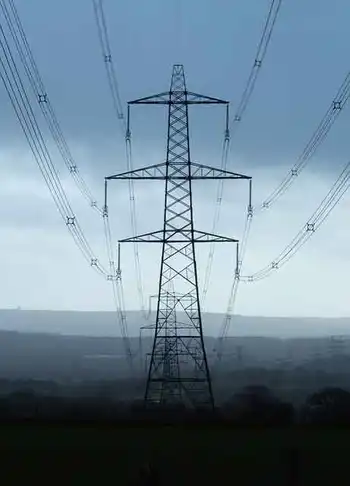Secret deal derailed new coal plant
By Charleston Post and Courier
Substation Relay Protection Training
Our customized live online or in‑person group training can be delivered to your staff at your location.

- Live Online
- 12 hours Instructor-led
- Group Training Available
That was the warning Santee Cooper, the state-owned electricity company, gave to state and federal regulators. It was the argument the power company presented at public hearings. And it was that caution that Lonnie Carter, Santee Cooper's president and chief executive officer, offered in interviews.
The argument that the coal-fired power plant was the only solution formed the key justification for Santee Cooper to spend $242 million over the past three years, most of that stockpiling material to build, even though it lacked government approval to operate the facility.
For much of that time, a little-known executive with a little-known company worked behind the scene, with Santee Cooper's blessing, to find a way to make the expensive and polluting power plant unnecessary.
The effort by Ron Calcaterra, president of the Central Electricity Power Cooperative, and his team paid off last month when Santee Cooper's Board of Directors suddenly announced it had pulled the plug on the Pee Dee Power Generation Plant.
The solution Calcaterra found: Buy some of its electricity from Duke Energy instead of Santee Cooper. That way Duke could use its excess power capacity, created largely because of the decline of the textile industry, and Santee Cooper wouldn't have to build a new coal-fired power plant. The deal would buy enough time for a proposed new Fairfield County nuclear power plant that Santee Cooper plans to build with SCANA to come online about 2017 to meet expected increased power needs.
That seemingly simple announcement ended a heated three-year battle between Santee Cooper and environmentalists who characterized the proposed Pee Dee plant as an industrial dinosaur.
The deal saved more than $1.2 billion in construction costs. It stopped untold millions of dollars in increased electricity costs. It ended the prospect of millions in additional charges to Santee Cooper's customers if, as expected, the federal government began regulating greenhouse gas emissions. And it prevented increases in poisonous mercury fallout and air pollution.
Calcaterra is an electrical engineer by training and an amateur photographer. His office walls in Columbia feature artsy shots of power plants, equipment and electric poles. He's spent most of his working life with electric utilities, and he fully supported construction of the coal-fired Pee Dee Power Generation Plant when planning began four years ago.
Central Electricity was experiencing significant growth, and the cost-effective solution at the time was to build the coal plant along the Great Pee Dee River, Calcaterra said.
Coal-fired plants can take 10 years from planning to completion, and given the growth at the time, Central didn't feel that it had another viable choice to meet that demand. Central has a legal obligation to serve the areas it covers, he said. "We can't say no."
Central purchases and supplies electricity to 20 cooperatives across the state, serving some 680,000 customers, mostly residential homes, accounting for about 1.4 million people, almost a third of the state's population. It works in close cooperation with Santee Cooper. Central provides the customers, and Santee Cooper provides the bulk of the power. Central accounts for about 60 percent of Santee Cooper's business.
The relationship began in the early years after World War II. With the war's end Santee Cooper had excess power, and rural electricity cooperatives, which were in their infancy, needed electricity to serve far-flung households.
That led to the creation of Central, which had access to low-interest federal loans and built transmission lines to bring power to the cooperatives from Santee Cooper. Central later turned the lines over to Santee Cooper, and the two have been closely connected ever since, with a goal to provide electricity in the cheapest, most reliable way.
Shortly after Santee Cooper began plans for the Pee Dee plant, Central adopted a new mission statement, adding an environmental element to its operating principles. Its supply of power would strive to balance "price, reliability and environmental principles."
Central promised to seek economically reasonable "renewable resources which are environmentally responsible, which offset or reduce CO2 and other emissions."
And it stated: "We view conservation and energy efficiency as a resource equal to power generation."
Both of those principles were among the key arguments used by environmental organizations in their fight against the Pee Dee plant.
About the same time, circumstances began to build against the plant, Calcaterra said. Among those was overwhelming scientific agreement that global warming was real and that it is fueled by carbon dioxide releases from coal-fired power plants. And it began to appear that the federal government might begin regulating carbon dioxide emissions through some form of "cap and trade" program in which polluting plants would have to buy credits from cleaner plants.
That created uncertainty over what the ultimate cost might be for electricity from the Pee Dee plant.
On top of that, Calcaterra grew increasingly concerned about the projected cost of the Pee Dee plant: That cost far exceeded Santee Cooper's bill for installing its two newest-coal fired generators at the Cross facility on Lake Moultrie.
With construction projected to cost $1.2 billion for one plant, the base cost of electricity from the Pee Dee plant would be $2,145 per kilowatt, double the amount of electricity from the Cross generators, with the possibility of even higher costs, Calcaterra said.
With that and the environmental concerns, he knew "we had to try to avoid the Pee Dee unit while still meeting the obligation to serve."
So, as Santee Cooper began its public campaign for the Pee Dee plant three years ago, Central began seeking alternatives, Calcaterra said. "We asked Santee Cooper if we could go out to see if we could find some avenues to take advantage of that they couldn't."
Santee Cooper President Carter agreed that the cost of the proposed Pee Dee plant would have been "significantly higher" than Cross, and he welcomed Central's efforts to find another way, especially if it allowed Santee Cooper to avoid significant construction costs.
The intricate regulatory and contractual rules that govern power companies limited Santee Cooper's ability to get other power companies to service its customers, but Central had more options so long as it meet three obligations, Calcaterra said:
It could do no financial harm to Santee Cooper. It couldn't leave Santee Cooper unable to sell the electricity it already produced, and Central wanted to avoid creating the need to build new power generation capacity.
About a year and a half ago, Calcaterra and his team began confidential talks with Duke.
The negotiations involved five Upstate cooperatives that before becoming full members of Central in 2008 had purchased their power from Duke or the Saluda River Electric Cooperative, which like Central purchased power for other cooperatives. Saluda River's power came partially from the Catawba nuclear plant operated by Duke.
Because Duke had historically served the five Upstate cooperatives, it would be possible for the company to do so again, even if the cooperatives remained part of the Central system. Under a deal worked out with Duke and agreed to by Santee Cooper, the transfer of service to Duke will phase in from 2013 to 2019, just when Santee Cooper projected that it would need the added power from the proposed Pee Dee plant. About 1,000 megawatts of power would be shifted from Santee Cooper to Duke. That's enough to serve 250,000 homes. That amount of power generally costs about $300 million to $350 million a year.
Some regulatory hurdles remain, but Calcaterra and Carter do not expect them to derail the agreement.
It's a seemingly simple solution, but it required lengthy, complicated and sensitive negotiations to pull off, Calcaterra said. While those negotiations proceeded, he continued to publicly support Santee Cooper's efforts to win approval to build the Pee Dee plant. (State regulators gave Santee Cooper permission to build two coal-burning plants that the utility said would cost $2.2 billion.)
He had no real choice because the Pee Dee plant would have been necessary if the negotiations failed, Calcaterra said. "We weren't certain it would work."
Carter said Santee Cooper never really wanted to build the coal plant but felt forced by circumstance. Although the power company has publicly maintained for years that the coal plant was the only feasible alternative, Carter says the company hinted all along that an acceptable alternative might be out there. He said he did so by constantly repeating a statement that, "We wouldn't build a coal plant if we didn't have to."
The deal between Duke and Central provided the out. Carter said those negotiations had to remain secret until arranged to prevent some outside force from derailing it. "You want to mess up a contractual negotiation, get a lot of people in the kitchen with you."
Carter calls the deal "a triple win." And Calcaterra couldn't suppress a grin as he talked about what it accomplishes. "I think everybody benefits from it."











